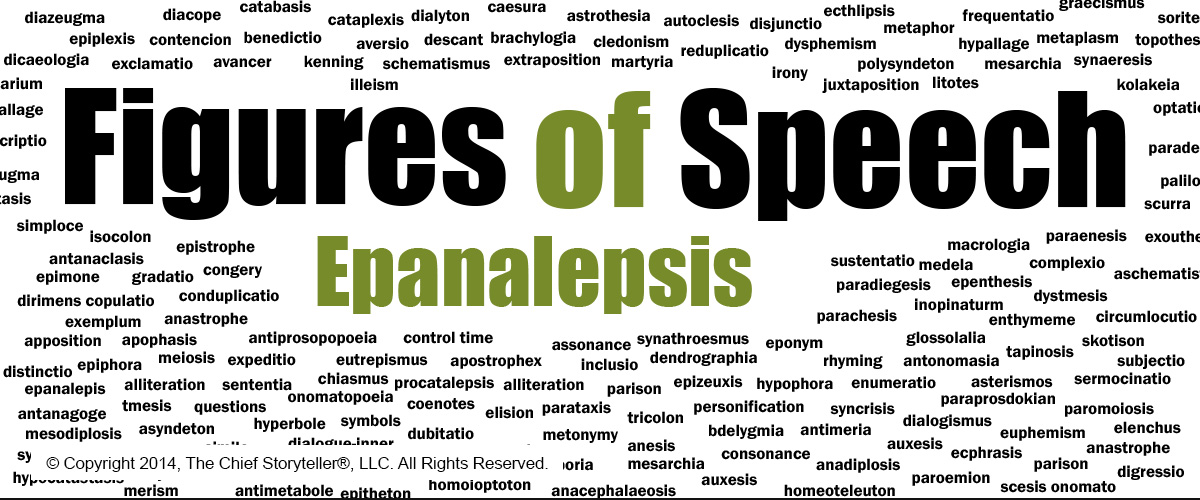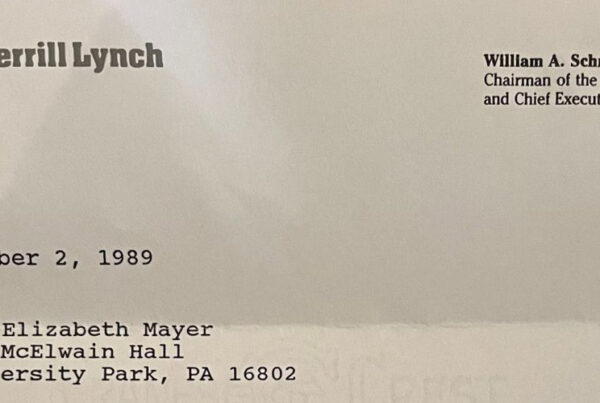
Epanalepsis is a Figure of Speech for improving Emphasis & Impact. It is part of a series on figures of speech and rhetoric. I share them as the English language has hundreds of figures of speech/literary devices to help you (dramatically) improve the effectiveness and impact of your various written, spoken, and social media communication.
While I include background information, Greek word derivation, and pronunciation, what is most important is the application of each figure of speech in your communication.
I tell my consulting customers, workshop participants, coaching clients, and students (I’m an adjunct professor at The Robert H. Smith School of Business), the same thing:
“You never have to remember the actual Greek word for the figure of speech. Just remember the concept and application.”
Emphasis & Impact Figures of Speech include Anadiplosis, Anaphora, Asyndeton, Diacope, Epanalepsis, Epiphora, and Polysyndeton.
Amplification Figures of Speech include Auxesis and Epizeuxis,
Figures of Sound include Onomatopoeia.
Other Figures of Speech include Procatalepsis and Portmanteau.
There are three major sections:
- Figure of Speech. Includes a little background, usage, definition, pronunciation, other related figures of speech, and etymology.
- Usage Guidelines. Follow these guidelines to ensure maximum impact.
- Examples of Epanalepsis. Find examples from speeches, presentations, presidential addresses, poems, music, and more
1) EPANALEPSIS – EMPHASIS AND IMPACT FIGURE OF SPEECH
One of the more well-known examples of Epanalepsis is from the French. The phrase, Le roi est mort, vive le roi! was yelled aloud when Charles VII ascended the throne after Charles VI, his father, died in 1422 . This French phrase means, “The king is dead, long live the king!”
A well-crafted sentence with Epanalepsis draws obvious attention to a word or short phrase. Epanalepsis bookends the beginning of the sentence/clause with the ending. Epanalepsis is a dramatic literary device to make your points, stories, presentations, public speaking, briefing, etc. more memorable. Use Epanalepsis deliberately for dramatic effect. By placing your word or phrase at the beginning, you are introducing it to your audience. By placing your word or phrase at the end, you are encouraging your audience to really remember it.
When saying this phrase, slow your speaking pace and pause purposefully between words, especially before and after your word repetition. This way, you are drawing attention to the cadence of your words.
| Definition | Epanalepsis is when words at the beginning of a clause or sentence are repeated at the end of that clause or sentence, with words in between. Note, they do not have to be exactly in the beginning and exactly at the end… see examples below. |
| Pronunciation | ep – ah – nuh – lep – sis |
| Also Known as | |
| Related to | Anadiplosis, Antimetabole, Anaphora, Chiasmus, Epiphora, Simploce |
| Etymology | Derived from the Greek word, ἐπανάληψις, meaning “repetition” or “resumption” From epi, meaning upon. And from ana meaning back. Then lepsis meaning taking hold. |
2) USAGE GUIDELINES
Here are some guidelines for you to ensure the use of Epanalepsis achieves your communication goals:
| Use Sparingly | Too much of one type of a figure of speech or literary device will likely reduce its effectiveness and may cause your audience to miss your emphasis entirely as there are too many instances. As such use Epanalepsis sparingly and for that matter, all of your figures of speech. |
| Choose a Simple Word or Phrase | If you were to analyze narratives where Epanalepsis is used, you would find the authors use simple words and simple phrases. And generally, shorter sentences. Ensure your audience can readily remember your ideas. Simple and short always wins the day. See Section 3 below for examples. |
| Use Your Orchestra |
In my training and teaching, I share specifics on how to use one’s voice to add (dramatic) impact to your spoken communication. Think of yourself as an orchestra with three main instruments: i) your Words; ii) your Body (Language); and iii) your Voice. Using your orchestra effectively, is what separates a good speaker from a great speaker. A good trainer from a great trainer. A good leader from a great leader. |
3) EXAMPLES OF EPANALEPSIS
Look at the examples below. See how Epanalepsis is used to dramatically increase the effectiveness and impact of your words. Then experiment, mixing and combining other figures of speech in your various communication.
Example 1: Yogi Berra, During 1973 National League Baseball Pennant Race
| Without Notation | It ain’t over until it’s over. |
| With Notation |
It ain’t { over } until it’s { over }. |
Example 2: King Lear, William Shakespeare
| Without Notation | Blow winds and crack your cheeks! Rake, blow! |
| With Notation |
{ Blow } winds and crack your cheeks! Rake, { blow }! |
Example 3: “They Went Home,” Maya Angelou, American Poet
| Without Notation | They went home and told their wives, that never once in all their lives, had they known a girl like me, but… they went home. |
| With Notation |
{ They went home } and told their wives, that never once in all their lives, had they known a girl like me, but… { they went home }. |
Example 4: Student from My Communication, Storytelling, and Public Speaking Class
| Without Notation | As I near the end of the semester, I realized that this class has been the most important class I have ever taken in my life (in high school, college, everything). I can’t stress how much I have benefited from this experience, and will forever be thankful for everything that I learned to perfect. All those Better Tomorrow Messages™ really did give me a better tomorrow. |
| With Notation |
As I near the end of the semester, I realized that this class has been the most important class I have ever taken in my life (in high school, college, everything). I can’t stress how much I have benefited from this experience, and will forever be thankful for everything that I learned to perfect. All those { Better Tomorrow } Messages™ really did give me a { better tomorrow }. |
Example 5: “To the Lighthouse,” Virginia Woolf
| Without Notation | He smiled the most exquisite smile, veiled by memory, tinged by dreams. |
| With Notation |
He { smiled } the most exquisite { smile }, veiled by memory, tinged by dreams. |
Example 6: Ralph Nader, Speech to NAACP’s 91st Annual Convention, 2000
| Without Notation | A minimum wage that is not a livable wage can never be a minimum wage. |
| With Notation |
A { minimum wage } that is not a livable wage can never be a { minimum wage }. |
References: I use a combination of my experience, my personal library of books and journals, sources from the Internet, and my 640-plus page Story Elements Resource Guide. My favorite sources include, in alphabetical order: American Rhetoric, Encyclopedia Britannica, LitCharts, Literary Devices, Merriam-Webster Dictionary, Oxford English Dictionary, Silva Rhetoricae, and ThoughtCo. My favorite books include: A Handbook of Rhetorical Devices by Robert A. Harris; Elements of Eloquence by Mark Forsyth; and A Handlist of Rhetorical Terms, 2nd Edition by Richard A. Lanham.
Updated November 2019
Photography Source: Message Cloud/Word Cloud © Copyright 2019, The Chief Storyteller®, LLC. All Rights Reserved.
#chiefstoryteller #communication #figuresofspeech #language #rhetoric



